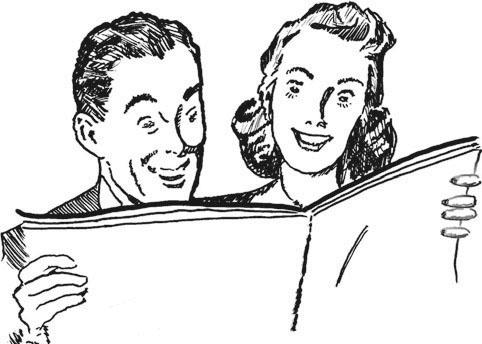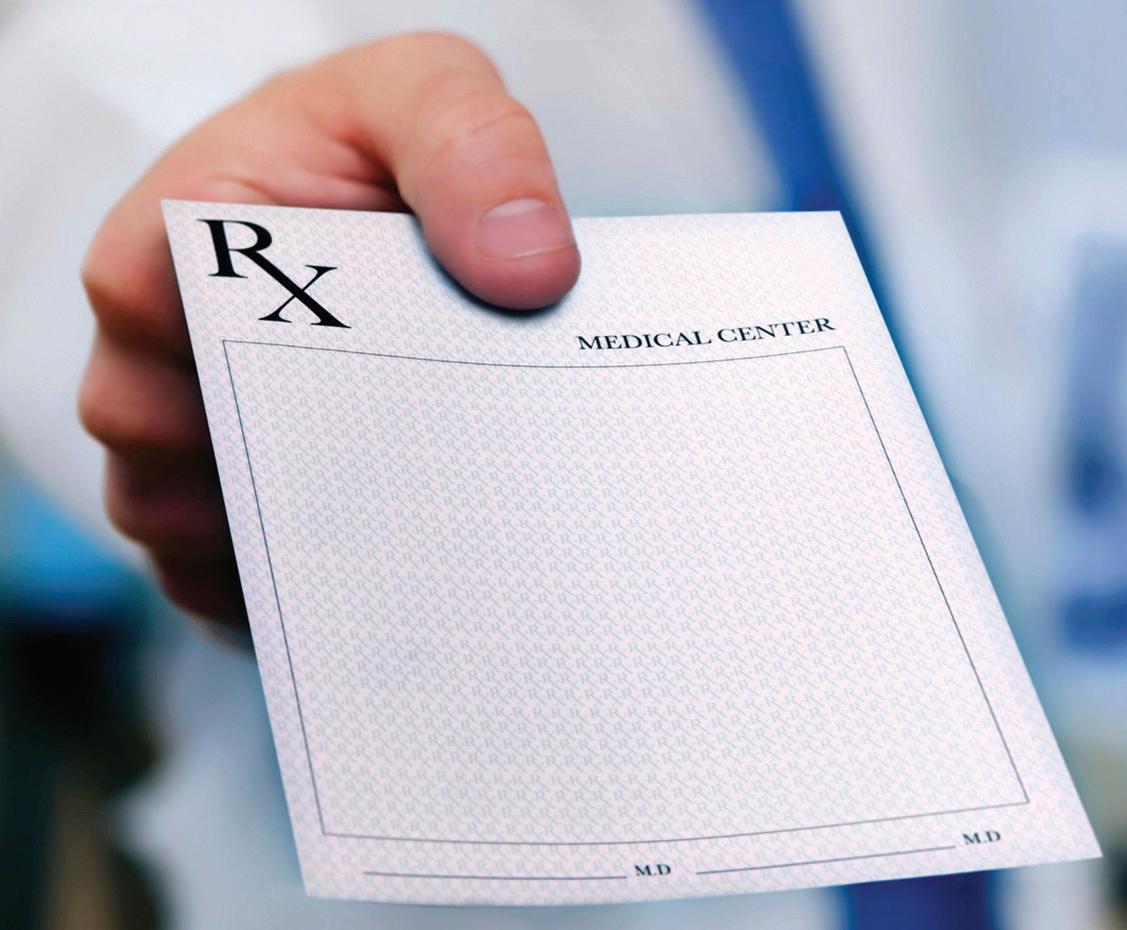
18 minute read
3 4 9 6 8 7 2 1
AUGUSTAMEDICALEXAMiNER FEBRUARY 7, 2020
Ask a Dietitian Ask a Dietitian KIDNEY HEALTH: WHAT EVERYONE SHOULD KNOW by Christopher R. Nesbitt, MBA, RD, LD, Renal Dietitian
The failure to acknowledge, address, and manage diabetes and high blood pressure may ultimately lead to end-stage renal disease (ESRD), requiring dialysis. Preventing damage to your kidneys is a topic very little discussed. However, once the damage is done the reactive treatment methods of dialysis and kidney transplants are frequently discussed. As a renal dietitian I hear “How did I get here?” from patients almost daily. This question is directly related to why the patient needs dialysis. Though I am not a Nephrologist or medical doctor, it is my responsibility to explain the why to the patient. I approach this by referring to the doctor’s diagnosis.
The two most common diagnoses that lead to endstage renal disease requiring dialysis are diabetes and high blood pressure. As a renal dietitian, I explain how diet, exercise, disease management, and medications each play a role in ESRD. This article discusses preventive measures and the numerous actions you can take to preserve your kidney health. You can start your kidney health check-up by taking inventory of the following things first: diet, exercise, primary care physician visits, and medications.

Please see KIDNEY HEALTH page 16 DIET
When it comes to protein in the diet more is not always better. Reason being, the kidneys have to work harder to filter the breakdown of excess protein. If you’re wondering how much protein your body needs, a good rule of thumb is 0.36 grams per pound for a normal body weight. If you are athletic, underweight or overweight, it is best to see a licensed Dietitian to best determine your estimated protein needs. A diet rich in fruits, vegetables, whole grains, fiber, and lean meat is preferable. Maintaining healthy weight is also key to kidney health. The BMI measure for weight classification is not perfect, but it stills serves as a tool to monitor your weight health. You should look to have your BMI between 18.5-24.9 for a normal weight. EXERCISE
Boring to some and fun for others, exercise is a key ingredient to your best kidney health. The vascular health received from exercising has many benefits, including improved blood pressure, blood sugar, and stress level. Remember that the kidneys are comprised of millions of small blood vessels that filter waste from our blood. In order to keep these vessels working properly we must manage weight, blood pressure, blood sugar, and stress and exercise assists with achieving all of these. PRIMARY CARE PHYSICIAN VISITS
Outside of your spiritual life and family, your primary care doctor should be very close at the top of your relationship list. Reason being, without a health care provider in place it is nearly impossible to take preventative measures for kidney health. The labs and vitals you should be checking at your annual physical include the following: hemoglobin A1C, blood pressure, creatinine, glomerular filtration rate, and blood urea nitrogen. Knowing these labs will allow you to better track your kidney health. Your primary care physician should also know if you have any family history of kidney disease or other related issues.
www.southerncomfortshoes.com PEOPLE LOVE OUR SHOES SO MUCH THEY USUALLY BUY Comfort & therapeutic shoes and boots • Diabetic fittings • Custom orthotics • Board-certified Pedorthist • 20 major shoe brands • MD, PT, Podiatrist and Chiropractor referrals welcome SOUTHERN COMFORT SHOES 1001 WALTON WAY (706) 434-0129 • MON-THUR: 9-4 • FRI: 9-2 WALK-INS WELCOME! TWO!
LIFE IS COMPLICATED Death doesn’t have to be. We know how to help.
Caskets & More 1944 WALTON WAY • AUGUSTA • (706) 738-2999 • CANDMAUGUSTA.COM

Steppingstones to Recovery 2610 Commons Blvd. Augusta GA 30909 706-733-1935 SOMETIMES THE CURE needs a cure of its own
CCAUTOMOTIVE.COM AND WE NOW HAVE 4 SHOPS TO MAKE IT HAPPEN! PEAK PER PEAK PER4MANCE FOR MONEY-SAVING COUPONS, AUTO & TIRE CARE TIPS, AND MORE! Our job: Make sure your vehicle is operating at AND WE NOW HAVE 4 SHOPS TO MAKE IT HAPPEN! •DOWNTOWN• 990 Telfair St 706-724-0900 •W. AUGUSTA• 3954 Wrightsboro Rd 706-863-9318 •AIKEN COUNTY• 2355 Jefferson Davis Hwy 803-593-8473 •MARTINEZ• 4014 Washington Rd 762-685-5555 VISIT CCAUTOMOTIVE.COM TODAY
ART & FRAME

Custom Framing Custom Mirrors Art Installation Reframing 526 Georgia Avenue • North Augusta • 803.441.0144 Gallery Moments Printing Services
CRASH

COURSE More Americans have died on US roads since 2000 than in World Wars I & II combined
+ In our last class, Crash Course discussed the wisdom of seat belt use, at least among persons who value life and health. It’s practically suicidal to drive around without being belted in. In addition, it’s illegal.
But a little research prompted by a reader’s comment revealed something we were previously unaware of: some people think airbags have made seat belts redundant and unnecessary. That doesn’t mean they don’t wear seat belts. They might own a car that requires seat belts to be buckled up before it will start. Or they buckle up just to stop the maddening chimes that won’t stop until they do strap themselves in. But they don’t think it’s necessary for safety. Unofficial observational research conducted by the Medical Examiner suggests that many back seat passengers don’t buckle up. They probably theorize that in a crash they don’t have to worry about hitting a windshield or dashboard; they’ll hit the upholstered back of the front seats. No worries!
Sometimes front seat passengers can also be a bit lax in seat belt use. Here’s why both seat belts and airbags together are crucial for occupant safety. As we established in the previous article (read it online at issuu.com/ medicalexaminer/docs/01.24.20), seat belts have a proven decades-long track record of minimizing and preventing serious injury and death.
If seat belts did the job completely, airbags would never have come along. What would be the point? And if airbags did the job completely, why would car makers continue to install seat belts when they could save millions of dollars every year by discontinuing them?
The way airbags work is actually printed on most dashboards and steering wheels: SRS. We know what you’re thinking: Savannah River Site. Not this time. In vehicles it denotes the presence of a Supplemental Restraint System. Note that first word. Airbags can’t do it alone. They are supplements to what we’ll call the PRS: the Primary Restraint System, aka seat belts. In fact, without seat belts airbags can be downright lethal.
Consider the mechanics of a crash (once again, see previous issue). Let’s say a vehicle is traveling at 50 mph when it leaves the road and strikes a tree, a very common scenario. The first thing that happens, obviously, is that the vehicle stops. But for a few fractions of a second, everything in the vehicle that isn’t tied down continues traveling forward at 50 mph until each object, in turn, strikes something that stops its forward movement. Without a seat belt in play, one of those objects will be you. And any and all unbelted passengers. Not a good scenario at all. But it gets worse. Without a seat belt, the occupant of a vehicle isn’t just going forward at (in this case) 50 mph. Something else is coming toward him at 200 mph! That something is called an airbag.
Airbags don’t mess around. They can’t afford to. There’s no time. They deploy in milliseconds with tremendous explosive force. Hitting one can be pretty painful even when restrained by a seat belt, but without a belt an airbag is coming at you a lot faster than you’re coming at it. There are cases where unbelted children in front seats have been blasted into the back seat by deploying airbags.
Airbags can’t prevent every death or injury, and they also cause injuries. Most people would gladly trade a few minor injuries for being able to continue living, or not being a quadriplegic.
All of us have probably heard a friend, relative, neighbor or co-worker’s story of how someone they know was killed (allegedly) because they were wearing a seat belt. Or who walked away from a horrific wreck only because (allegedly) they were not wearing a seat belt. It’s hard to establish the truth behind such anecdotes, but even if every one of them is true, they are anomalies. In the overwhelming number of accident cases, the combination of airbags and seat belts offers the best available means to avoid death and to prevent or minimize serious injury. Why are they more important than ever? Tune in next time.
HUMAN BEHAVIOR How neuroscience works in everyday life
On a first date, do you just talk about yourself? Are you playing on your phone constantly? And do you get miffed if the person doesn’t want to kiss you when you’re saying goodnight? That’s totally NOT the way to enjoy a good first date—or any date. And that’s not me talking. That’s according to my son Finley, and he’s only 9. Yes, my 9-year-old is already wondering about talking to girls. He’s searching for videos about it on Kids YouTube. And he’s asking me, his dad, a neuropsychologist, about what exactly we should do and say. No pressure, son. 8 THINGS YOU SHOULD ALWAYS DO ON A DATE by Jeremy Hertza, Psy.D. and Finley Hertza
According to Finley (And Me)
When we talked about this, Finley got a lot of it right (major props to Kids YouTube).
What Finley said: “First of all, you shouldn’t talk about yourself unless someone asks you.”
What I said: When we’re uncomfortable or anxious, we tend to prattle on about ourselves to help us feel better. That’s completely the opposite of what we should do on a date. Ask questions instead. And really listen and respond to the answers.
What Finley said: “At the beginning, say hello or something that’s nice.”
What I said: People like hearing their own names. So greet your date with “Hello, [insert name here]!” It’s personal and directs your attention to them.
What Finley said: “Ask how the other person’s doing. Or ask good questions like, ‘What’s your favorite mythical creature and why?’”
What I said: Ask real questions, not superficial questions, about things you legitimately want to know. So instead of, “Where do you work?”, ask “What do you like about your job?” Ask more specific, detailed questions. But don’t make it weird—you don’t want your date feeling like they’re on an interview for the role of your boyfriend/girlfriend.
What Finley said: “Have good eye contact, and don’t play on your phone.”
What I said: It’s all part of body language: Is your date facing you and engaged with you, or staring at the floor? Do their replies to questions seem sincere?
What Finley said: “You might get a kiss, you might not. If not, don’t get upset, back away and blend in.” What I said: Ditto
Dates Can Be Tough
Hey, we all know dates can be tough. But here are a few other tips to make it fun—and maybe even develop a real relationship:
Pick an interesting location. Sure, a restaurant is fine. But maybe make it one with a cool cuisine you’ve both been wanting to try. Or choose an activity date like a festival or trivia. A first date is easier if there’s something that can help move the conversation along.
Remember, small things matter. If you want to give your date something, take a little effort to find out what he or she likes first. For example, your ex may have loved flowers, but maybe your date is allergic? Just work the question in naturally as best you can. In the case of a blind date, ask the person who’s setting you up for some ideas.
Finally, one thing a 9-year-old may not be able to express, but probably already knows innately: Honesty and communication are the two main things you need in a strong relationship. There’s no need for games; communicating honestly gives your date—and relationship—the best chance to be successful. +
The blog spot
— posted by Rabbi Chaya Gusfield on February 10, 2018 (Edited for space) THINK TWICE BEFORE YOU HUG
I’m usually a hugger, but I’ve learned an important lesson about touch through my work as a hospital chaplain. I often ask permission for the many ways that we interact: “May I visit for a while?” “May I sit down?” “May I turn your TV down while we talk?” Asking permission is a way of respecting the person’s autonomy. This is especially important in a hospital where throughout the day nurses, doctors, physical therapists, dietitians, and custodians walk into patient rooms without explicit permission, disturbing or poking the person in the process of delivering care. It’s important that people know they can say no to me when they are unable to say no to so many other providers. I learned to ask someone if they are hand holders in prayer or whether I can touch them. I rarely offer a hug to patients or family members because they may feel pressured to say yes, but occasionally I sense that a sincere hug at that moment would be appropriate and helpful. In those rare situations, I will ask permission, listen to their words, and watch their body language for the answer.
When my partner was diagnosed with cancer, I learned that unwelcomed touch could be a matter of life and death. She is immune compromised due to her ongoing chemo treatment even when she looks healthy. What may be a simple illness like a bad cold could, for her, become life-threatening pneumonia. She avoids crowds where sick people might be found. We vet people for their state of health before they are invited over. We insist on people washing their hands before coming into the home. She prefers matinees where there is alternate seating if someone sits next to her who sounds sick. Handshakes are even harder to avoid without feeling rude. Humans feel like walking germ carriers. That is a hard way to think about people, but it is her unfortunate reality.
The matter of touch became very real for me when I broke my elbow. Without a sling signaling to people to be careful, I was scared of being bumped. I tried to keep a safe distance for fear of being jostled. As people approached, I would pull away. I noticed that some people were very loving and respectful, others puzzled, and still others pushed the boundaries. “I’m not sick.” “Why can’t you hug?”
It was so restful when someone gave a kind look, put their hand on their heart, or bowed without asking any questions. They assumed there was a good reason I pulled away.
There are other reasons uninvited touch can be harmful to someone: they may have a hidden injury or chronic pain, or they may be an abuse survivor where touch initiated by someone without their permission can be triggering. Recent revelations of widespread sexual harassment and the #MeToo movement have made many people wary of unwelcome touch. In addition, there are culturally specific norms about touch we may not all be aware of. To be respectful, we need to listen to people’s body language and accept all responses to an offer of physical touch. Everyone gets to control their own body. We don’t need to understand or challenge them.
Sometimes we need a hug. I remember walking home from work one day. I was so sad from the state of the world and had just spent the day serving a large family with a tragic trauma at the hospital. I walked by where my hairdresser works. I knocked. When she came to the door, I just said, “I need a hug.” She said, “Me too.” We embraced without words, in a moment of mutual understanding, shared permission and deep healing. I invite us all to find multiple ways to express our warmth to one another. Through our eyes, gestures, words. When invited, through loving hugs, handshakes, or hand-holding. This awareness of each person’s touch-needs requires us to deeply listen to body language as well as their words.
When I say I am not hugging today or during flu season, please know that my heart still joins with yours. + There are other options.
Trust us, you don’t want to read this book. Do you really want to discover how many tens or even hundreds of thousands of living things share the apartment you thought you occupied alone? Well, maybe. It is fascinating to consider, and the knowledge that we are never really alone — whether at home or anywhere on this planet — is probably a very healthy step to take in the direction of environmental awareness.
The key point about that previous sentence is a word that is also in this book’s title: home. Humans are leaving the outside world at breakneck speeds. Consider your own life: many adults recall playing outside all day long all summer long, until the streetlights came on.
The kids of those kids, and their kids, are inside about 93 percent of the time, notes Dunn in one of the book’s opening chapters. And a fair amount of the scant outdoor time people have these days is spent walking from one building directly into another, or walking out of a building and into a car.
So an examination of indoor spaces is an examination of where we spend the vast majority of our time.
The message of this book is not that cleaning is futile. But it is. The most well-scrubbed home (and face, for that matter) is alive with alien creatures that share our space (and face). Dunn gives credit where credit is due, tracing our knowledge and awareness of all things microscopic through an extensive profile of Anton van Leeuwenhoek, “the father of microbiology” and widely credited as the developer of the microscope as a tool for scientists, doctors and medical

researchers of every kind.
Leeuwenhoek discovered all kinds of microscopic creatures — the Dutch name he gave them translates to “little animals” — in ordinary tap water, something that continues today despite centuries of advancements in water purification. But more surprising, Dunn and other modern researchers have discovered thriving colonies of living things inside water heaters, in thermal vents at places like Yellowstone, home of Old Faithful, and even in boiling lava.
And we think a few spritzes of 409 is going to make our homes sanitized and sterile? Life is a bit too prolific and tenacious to capitulate so easily. Incidentally, if this kind of thing appeals to you, Dunn has several other books with this same general focus.
Come to think of it, every pest control company should hand out free copies of this book as a sales tool. +
Never Home Alone — From Microbes to Millipedes, Camel Crickets, and Honeybees — the Natural History of Where We Live, by Robb Dunn, 336 pages, published in Nov. 2018 by Basic Books
Research News
Zinc and colds
Zinc lozenges are advertised as an effective way to shorten the duration of colds and/or reduce their severity. Some clinical studies have borne that out, while others have been unable to find any supporting evidence in favor of “vitamin Z.”
That usually means more studies are needed. Why the discrepancy?
An analysis published late last month in BMJ found that some studies with negative findings used lozenges with low zinc content, or which had ingredients that bind to zinc, preventing or slowing its release in the body.
After identifying these flaws, researchers at the University of Helsinki conducted a test of their own in a randomized, double-blind placebo-controlled trial using Helsinki city employees.
All were given a supply of lozenges (or placebos) with instructions to immediately begin their use as soon as they experienced cold symptoms. If they did, they were instructed to dissolve 6 lozenges per day by mouth for 5 days.
During the period of the trial, 88 workers experienced cold symptoms and used the lozenges. The findings after the study results were analyzed?
No difference in symptoms was observed between participants taking actual zinc lozenges and those taking the placebo. In fact, after the 5-day treatment period it was discovered that the zinc takers recovered from their colds more slowly than placebo takers.
The Finnish researchers did not conclude that zinc is an ineffective treatment. That’s not what researchers do. They recommend further research! There are studies, after all, which concluded that zinc is effective. So what is the ideal dosage which will make that happen? What is the optimal length of time to take zinc lozenges for the greatest positive effect?
Stand by. Patiently.
New colonoscopy guidelines You might have missed the news but in 2018 the American Cancer Society lowered its recommended age for an initial screening colonoscopy to age 45. Other major public health agencies still recommend starting at age 50, however.
New research at Tulane University School of Medicine looked at colon cancer incidence rates by year rather than age blocks, like 45 to 49, 50 to 54, etc. In so doing they discovered a strong argument for pre-age 50 screening: at age 49, there are fewer than 35 cases per 100,000 people, but it’s 51 cases per 100,000 among 50-year olds.
Not yet 50? Talk to your doctor. Get started. The life you save could be your own. +




